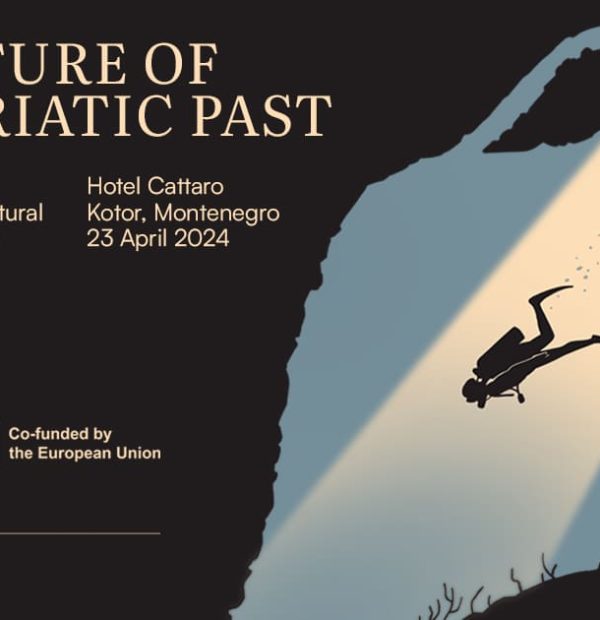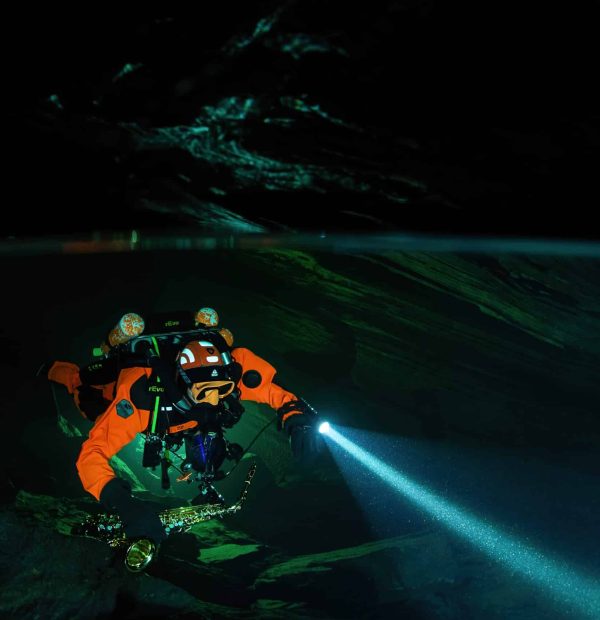Thursday, 16 May 2024
Menu

I was in Serbia for the first time in 2006, and I liked the country from the very beginning. At that time – ten years ago – we did not dive there, we were just passing through – we were going on a speleological diving trip to Albania, and we stopped to visit Belgrade. We were shown around the city by Uros Aksamović’s brother, who speaks perfect Polish and whom I will mention later. Similar languages, so you can easily communicate, rich culture, although after the wars and the break-up of Yugoslavia the country is quite poor.
In Serbia I got to know many interesting caves, I was especially interested in the underwater ones, although the dry ones have their charms too. Over the years of travelling to that area, I managed to find and explore several hundreds of metres of corridors. Serbia has the advantage of being on the way to more southerly countries, where my friends and I have also been going for years to discover underwater caves, and therefore there is always the opportunity to stop there.
The karst regions in Serbia where there are caves of interest to divers are mainly in the central part of the country, south of Belgrade, where caves also occur further east to the Bulgarian border, south to the border with Macedonia and the Danube Bend in the north-eastern part, near the border with Romania.
In the central part there are beautiful and deep caves, Vrelo Krupaje and Vrelo Mlave. The first time we dived in them was in 2007, during our first Serbian expedition.
Vrelo Krupaje is located on a fish farm, a huge cave opening at the end of a lake with beautiful blue water. Of course, it’s not always like this, after heavy rainfall the water is turbid and flows strongly in the cave, making diving impossible or very difficult. This has happened to us at times, and then we have to look for luck in other holes. The cave starts with a vertical well, which turns into a short tighter section and then branches off into several branches. The rock is dark and we can also observe the border of two rock layers at one of the passages.
It is possible to make a loop there at a depth of several meters, one of the corridors goes out to the dry part and is a bit muddy, and another goes down to a depth of 125 meters through a wide well. I dived it to 70m, where I encountered a narrowing. It’s not an obstacle though, it’s just the gas I had at the time. We have dived this cave many times for tourism and training, on the occasion of Cave Diving Workshops and SPELEOn diving workshops conducted in Serbia. This is an interesting place, explored by Jarek Kura and Serbian divers from the Tryton club.
Vrelo Mlave is a sinkhole and a restaurant has been built nearby, so the catering facilities are right on the spot, just like in Krupaje. Here too, as in Krupaje, divers are a kind of sensation and we are always accompanied by Serbs who are curious about what we are doing. The cave starts at 30m depth, is quite vertical and at the moment has been explored to about 90m depth, also by “Kurek” and the Serbs. Visibility there is usually not the best, and there are a lot of old, broken rails, so you have to be careful not only to navigate through the rooms, but also not to get entangled in those lines.
Vrelo Crnog Timoka is a cave we found on our own, analysing maps of the region with our colleagues Andrzej Szerszen and Rafał Szaniawski – a rather large river starts there, so we assumed there must be a spring. When we went there in 2008, after a short search we managed to find quite a big opening behind the rocks, from which a stream was flowing. First of all, such a place had to be recognized so as not to have to carry the equipment unnecessarily, so I stripped naked (in order not to get my clothes wet, standard procedure) and with a torch on my forehead I entered the cave, walking along the stream until the corridor went completely under water. It was known that it would be worth lugging the equipment here. Over the years 2009-2015 I dived there many times, each time trying to get to know the next parts of the cave.
The problem was usually the layout of the corridors, where after about 50m of underwater passage there was a clamp – a horizontal gap through which you had to get, so large cylinders were not an option. The breakthrough came probably in 2012, when I managed to find a way around this clamp through a wide corridor on the left side. From then on it was no problem to take larger and larger cylinders in the back configuration. There is a lot of clay in the cave, visibility is not the best, but the corridors are wide and the cave develops at a shallow depth – up to 5m. After about 400m and after passing through a narrow corridor and an air bubble, the corridor rapidly descends to 13m depth, then it goes up through another narrower corridor and ends with a more spacious hall with a gap in the ceiling, impossible to pass through due to its small size.
I spent a lot of time in this room, but I did not find any bypass and I ended my exploration there by discovering almost half a kilometre of underwater corridors in total. In the cave there is a variety of forms of underwater cave life, I met creatures similar to small shrimps, to earthworms and to centipedes. All milky white, without pigment.
Lazareva Pecina is a cave shown to us by our Serbian expedition companion, Uros Aksamović, where the dry parts are explored by his colleague Robert Misić. We dived there in 2012-2013, at different times of the year, so we had different visibility and strength of the current. Some of the dry parts are open to tourists, and there is an abandoned hotel nearby, where we also stayed for a while. The underwater passages are vast and beautifully carved, it gets murky quite quickly though. In front of the cave there is a vent lake, and in the depths of the cave there are several lakes and siphons diverging from them. Our big success was connecting the lake in front of the cave with the pond in the cave through an underwater passage. We also discovered several hundred metres of passages further into the cave.
In the years 2008-2009 we tried to explore the Strmosten vent. An old, post-industrial atmosphere, a spacious entrance hall, where the river leads to an underwater corridor. The visibility there was not good, the current in the narrows was quite strong and it was turbulent because of the mud falling from the ceiling and stirred up by exhaled bubbles, so we did not manage to discover much there. However, behind the terminals a corridor develops which I could see when I wasn’t breathing. The place was quite difficult to transport, I remembered wading through bushes growing between the road and the cave.
In 2007, in the northern part of Serbia, we operated in the Miroc mountains, where there are deep dry caves with siphons at the bottom. The activities here are regular speleology combined with diving after wading through several hundred metres of vertical corridors. In one of the caves, whose name I do not remember, the corridor was not passable, so we dug trying to get to the water below – but without success. In another cave, called Rakin Ponor, we dived into a siphon, which turned out to be shallower than on the plan, and as a result we made the cave shallower.
Nearby is the Bele Vode cave, which used to be dry, but after the Danube dam was built the water level rose and it is now flooded. There are numerous dripstone formations, but they can’t be admired for too long due to the rapid decrease in visibility to complete zero.
The water temperature in the described caves is about 7-8 degrees Celsius, which is the normal temperature in the caves of this region. Each of the described caves means for me and my companions a series of transport and diving actions, camps, accommodation in various places and conditions, and extremely interesting contacts with local inhabitants. Lots of memories, lots of adventures. However, the volume of the study does not allow for more detailed recollections at this time.
Dominik Graczyk “Honzo”, SPELEOn diving, Honzo Dive









Welcome to DIVERS24.COM, your daily source of scuba news, freediving, scuba diving information, and equipment reviews. Our comprehensive coverage of the dive industry from A to Z provides you with all the latest scuba news, training updates, underwater photography tips, and everything else related to scuba diving. Whether you’re a beginner or an experienced diver looking for more knowledge about scuba gear or techniques – we’ve got it covered! With our in-depth articles written by experienced divers who have been there and done that, you are sure to find exactly what you need here at Divers24.com. Dive into scuba news today!
Underwater Media Sp. z o.o.
Szafarnia 11/F8,
80-755 Gdansk, Poland
Welcome to DIVERS24.COM, your daily source of scuba news, freediving, and scuba diving information. Sign in for a weekly news update and discount coupons for dive gear and apparel.
@2023 - underwatermedia.pl. All Right Reserved. Designed and Developed by Tworzenie stron internetowych Gdansk

The Divers24 portal is currently the largest online medium treating diving in Poland. Since 2010 we have been providing interesting and important information from Poland and around the world on all forms of diving and related activities.
Contact us: info@divers24.com